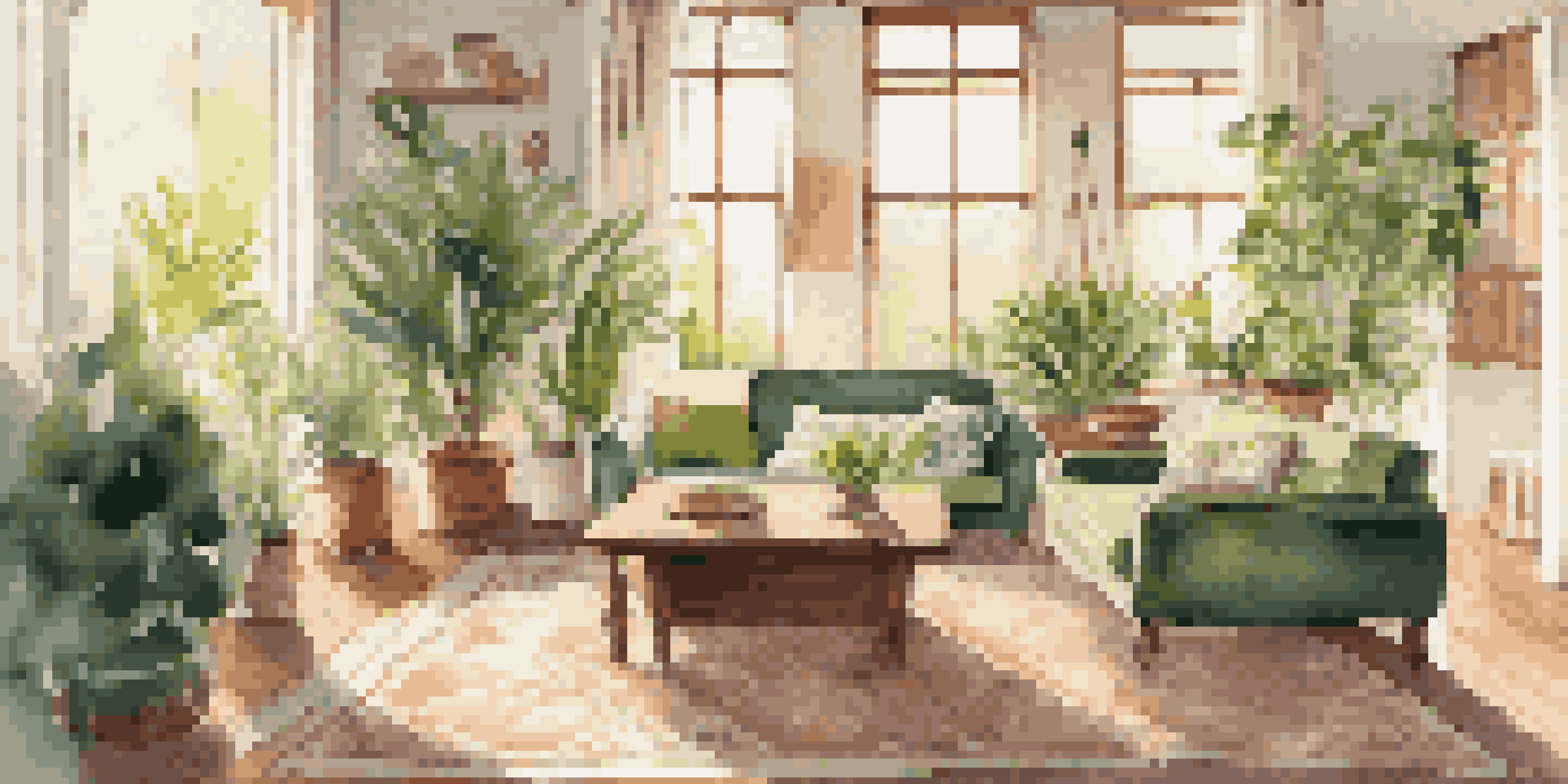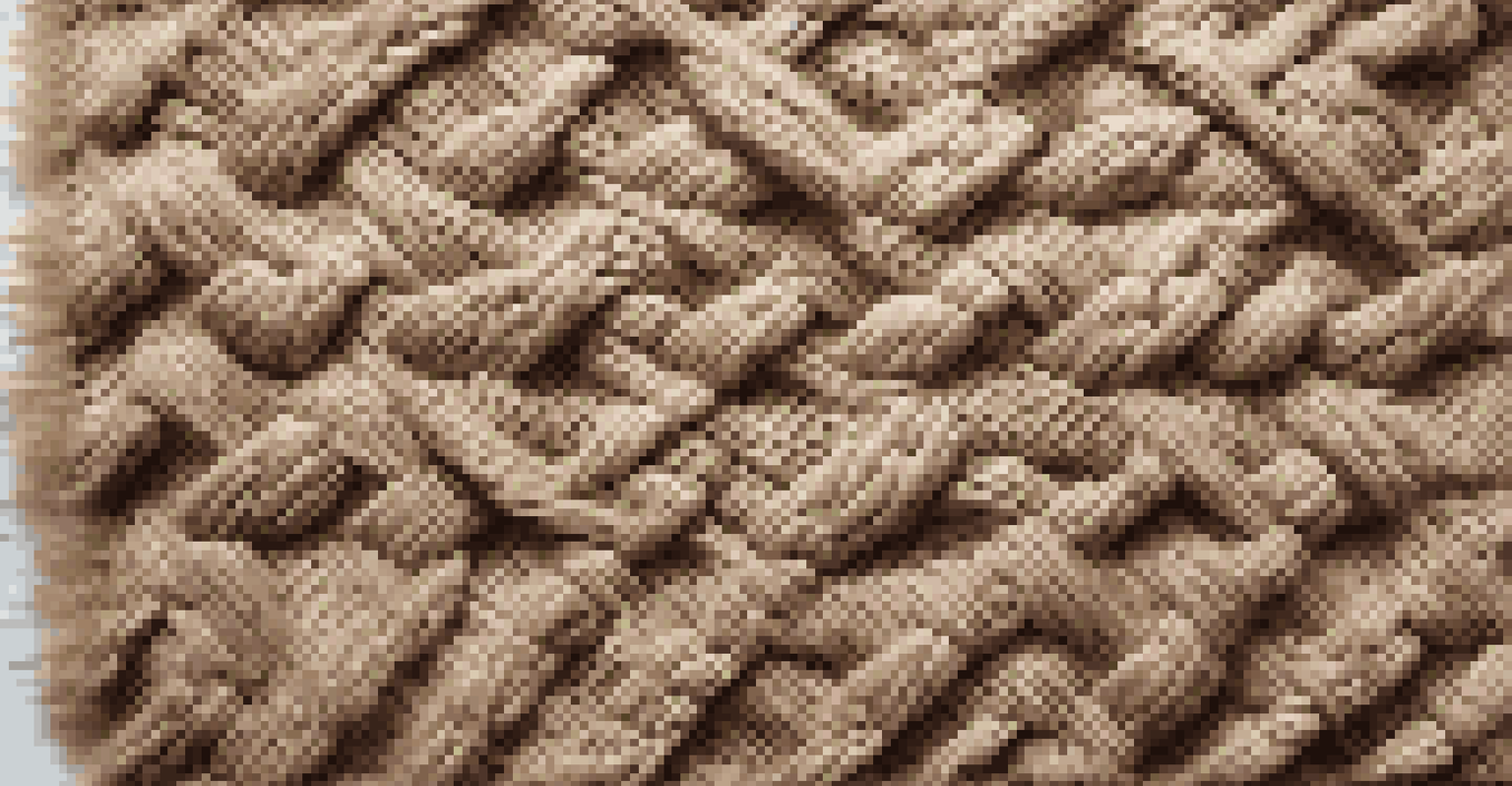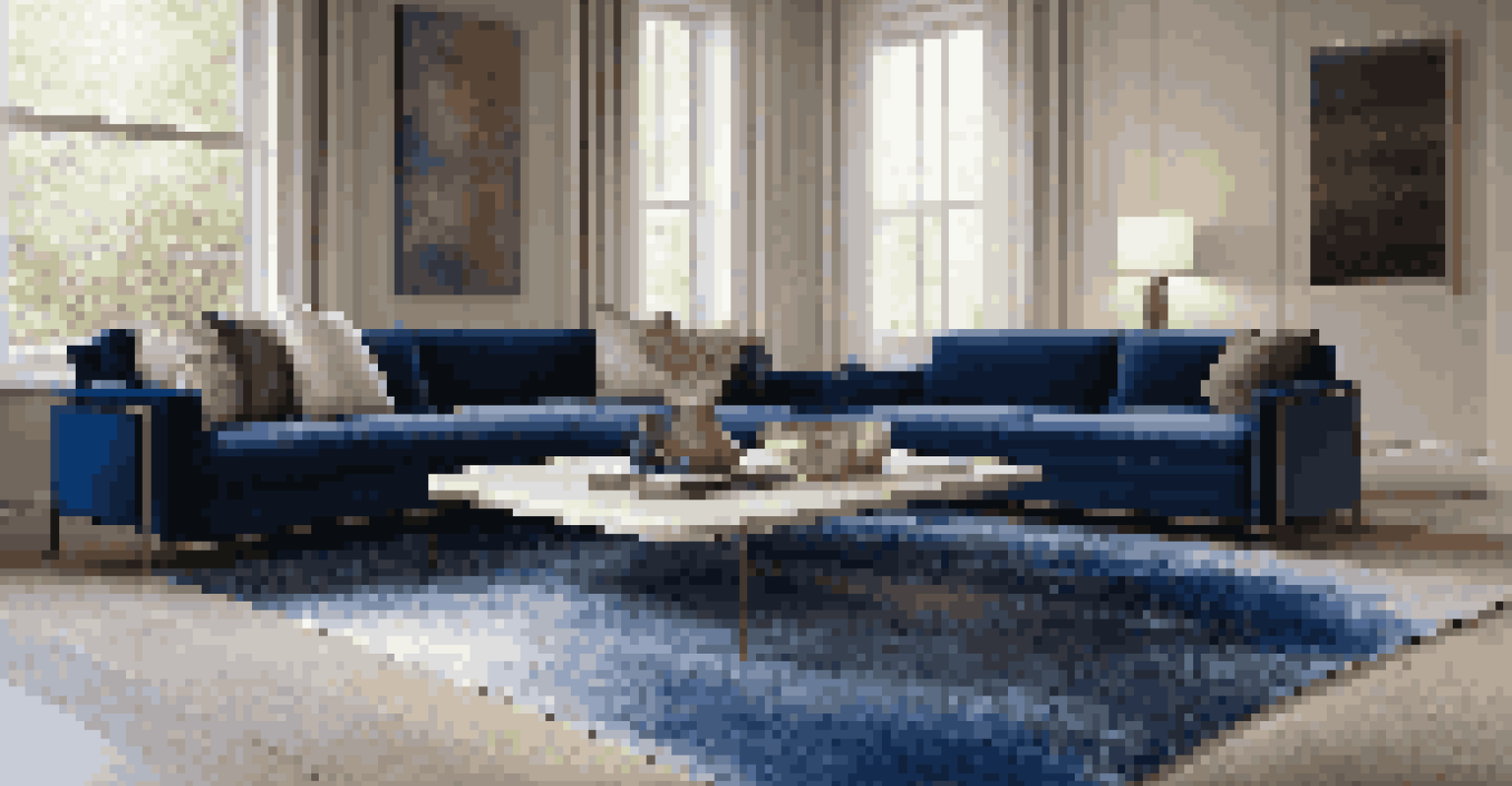The Role of Texture in Rug Making: Creating Depth

Understanding Texture: The Heart of Rug Design
Texture in rug making is more than just a tactile experience; it's a crucial design element that adds visual interest. Think of texture as the personality of the rug, influencing how it feels and looks in a space. Just as a well-composed song has rhythm and melody, a rug's texture brings harmony to the overall design.
Texture is the most important design element in a rug; it influences how it feels and looks in a space.
In the world of textiles, texture can be created in numerous ways, whether through the choice of materials, weaving techniques, or finishing touches. For instance, a fluffy shag rug can evoke coziness, while a flatwoven piece might appear sleek and modern. This diversity allows designers to play with various textures, creating rugs that cater to different tastes and styles.
When selecting a rug, consider how its texture will complement your existing decor. A bold, textured rug can serve as a statement piece, drawing attention and sparking conversation. Conversely, a subtler texture can provide a calming backdrop, allowing other design elements to shine.
Types of Textures in Rug Making: A Closer Look
Rugs can feature a variety of textures, from plush and soft to coarse and sturdy. Each type of texture serves a unique purpose and can evoke different feelings. For example, a high-pile rug invites you to sink your feet into its softness, while a jute rug with a rougher texture can add an earthy, organic touch to your space.

Some common textures include looped, cut, and mixed pile. Looped rugs offer durability and a unique visual appeal, while cut pile creates a softer feel. Mixed pile combines both techniques, resulting in dynamic designs that play with light and shadow, enhancing the depth of the rug.
Texture Defines Rug Personality
Texture is a vital design element that influences both the visual and tactile experience of a rug in a space.
Understanding these textures helps in making informed choices for your home. By selecting the right texture, you can enhance not only the aesthetic but also the functionality of the rug, ensuring it meets your lifestyle needs.
The Impact of Material on Rug Texture
The materials used in rug making are fundamental to achieving desired textures. Natural fibers like wool and cotton can create soft, luxurious finishes, while synthetic materials often offer durability and ease of maintenance. Each material interacts with light differently, contributing to the overall depth of the design.
The right texture can transform a space, making it feel warm, inviting, and uniquely yours.
For instance, wool rugs typically exhibit a rich, textured appearance thanks to their natural fibers' resilience and ability to hold shape. On the other hand, silk rugs shine with a lustrous finish that can seem almost ethereal. When combined, these materials can create stunning contrasts that elevate the rug's visual appeal.
When selecting materials, consider not only the texture but also how it fits into your lifestyle. A high-traffic area may require a more durable material, while a bedroom rug could prioritize softness and comfort. The right choice can enhance both the look and longevity of your rug.
Weaving Techniques: Crafting Texture and Depth
The weaving technique used in rug making plays a crucial role in defining its texture. Techniques like hand-knotting, tufting, and flatweaving each produce distinct textures that can dramatically alter the rug's appearance. For example, hand-knotted rugs often showcase intricate patterns and rich textures, while tufted rugs can have a plush, inviting feel.
Flatweaving, often seen in styles like kilims, creates a smoother texture that emphasizes color and patterns over depth. This technique allows for vibrant designs but sacrifices some of the plushness found in thicker weaves. As a result, flatwoven rugs are often lightweight and easier to clean, making them ideal for certain spaces.
Material Impacts Rug Texture
The choice of materials in rug making, such as wool or silk, fundamentally affects the texture and overall aesthetic of the rug.
By understanding these weaving techniques, you can better appreciate the artistry behind each rug. Whether you prefer the depth of a hand-knotted piece or the simplicity of a flatwoven design, the technique chosen will significantly impact the final product.
Color and Texture: A Harmonious Pairing
Color and texture are intertwined in rug design, with each influencing the other. A textured rug can amplify the vibrancy of its colors, while the choice of color can enhance the perception of texture. For example, a deep blue rug with a shaggy texture may feel more inviting than a flatwoven version in the same hue.
Contrast is another powerful tool in this interplay. A rug featuring a mix of smooth and rough textures can create a captivating visual experience, drawing the eye and encouraging interaction. This contrast can serve to highlight specific areas within a room, guiding the viewer's attention.
When selecting a rug, consider how the combination of color and texture will work together in your space. A well-chosen rug can serve as a focal point, tying together various elements of your decor while also inviting touch and exploration.
Layering Textures: Adding Complexity to Your Space
Layering textures in interior design is a fantastic way to create depth and interest, and rugs are no exception. By placing rugs of varying textures on top of one another, you can craft a unique landscape beneath your feet. This technique not only adds visual intrigue but also invites a tactile experience, making your space feel more inviting.
For instance, layering a plush, shaggy rug over a flatweave can create a luxurious feel while also defining different areas within an open-plan space. This approach allows you to play with patterns and colors, resulting in a dynamic and personalized aesthetic. It's a way to express your creativity while enhancing your home's comfort level.
Layering Textures Enhances Design
Layering rugs with varying textures creates depth and visual interest, allowing for a personalized and inviting space.
When experimenting with layered rugs, consider balancing colors and patterns to maintain harmony. The goal is to create a cohesive look that feels intentional rather than chaotic, allowing each layer to shine while contributing to the overall design.
Conclusion: The Lasting Influence of Texture in Rug Making
In conclusion, texture is a fundamental aspect of rug making that cannot be overlooked. It influences everything from the visual appeal to the tactile experience, playing a pivotal role in how a rug interacts with its environment. As we've explored, various elements like materials, weaving techniques, and color all contribute to the rich tapestry of textures available.
Whether you're a designer, a homeowner, or simply a rug enthusiast, understanding texture can elevate your appreciation of these beautiful creations. The right texture can transform a space, making it feel warm, inviting, and uniquely yours. By embracing the role of texture, you can create depth not just in rugs, but in your entire living space.

So, the next time you're shopping for a rug or contemplating a design project, remember the power of texture. It's not just about aesthetics; it's about creating an atmosphere that resonates with your personal style and enhances your everyday life.